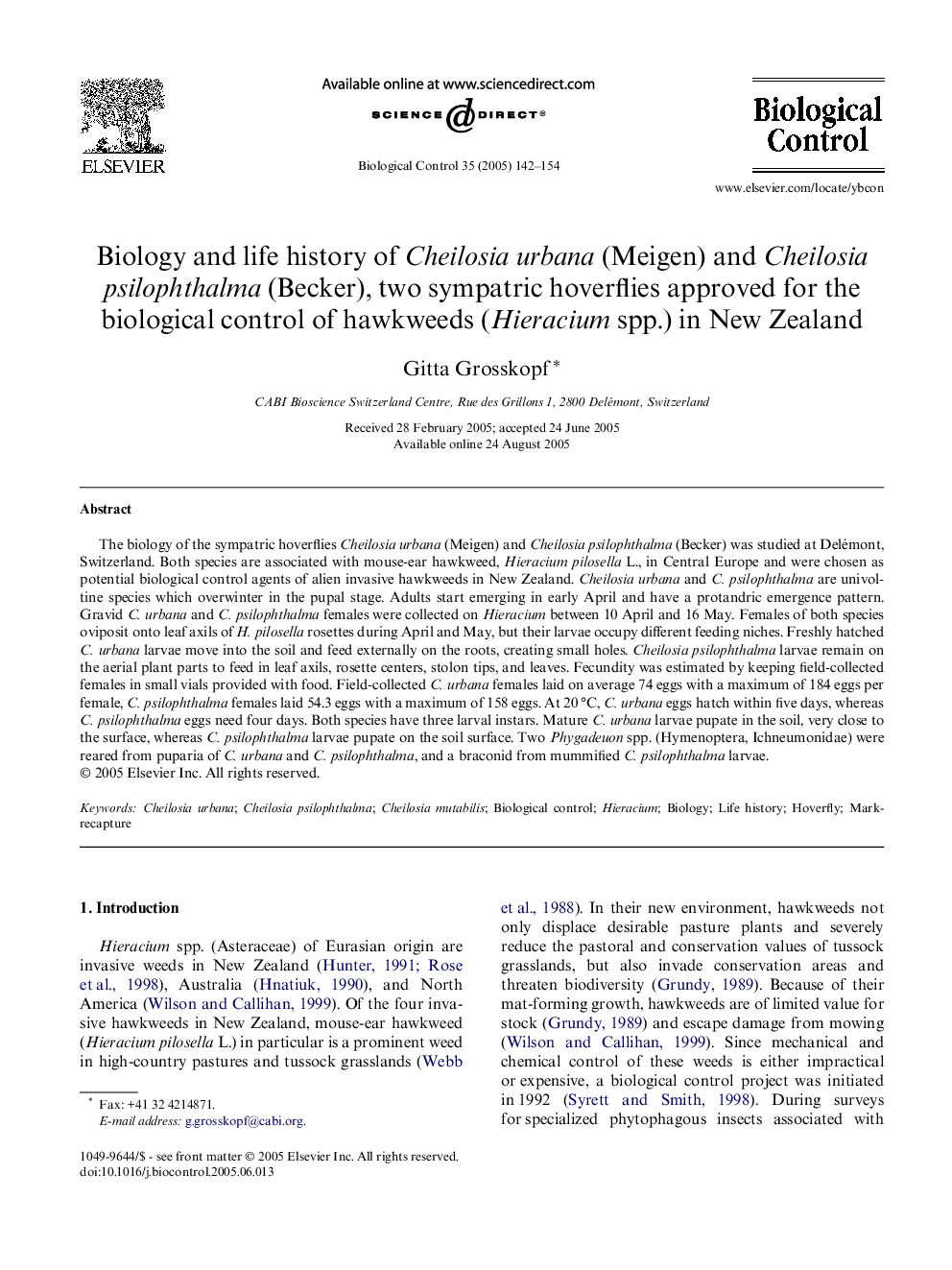| کد مقاله | کد نشریه | سال انتشار | مقاله انگلیسی | نسخه تمام متن |
|---|---|---|---|---|
| 9471999 | 1321152 | 2005 | 13 صفحه PDF | دانلود رایگان |
عنوان انگلیسی مقاله ISI
Biology and life history of Cheilosia urbana (Meigen) and Cheilosia psilophthalma (Becker), two sympatric hoverflies approved for the biological control of hawkweeds (Hieracium spp.) in New Zealand
دانلود مقاله + سفارش ترجمه
دانلود مقاله ISI انگلیسی
رایگان برای ایرانیان
کلمات کلیدی
موضوعات مرتبط
علوم زیستی و بیوفناوری
علوم کشاورزی و بیولوژیک
علوم زراعت و اصلاح نباتات
پیش نمایش صفحه اول مقاله

چکیده انگلیسی
The biology of the sympatric hoverflies Cheilosia urbana (Meigen) and Cheilosia psilophthalma (Becker) was studied at Delémont, Switzerland. Both species are associated with mouse-ear hawkweed, Hieracium pilosella L., in Central Europe and were chosen as potential biological control agents of alien invasive hawkweeds in New Zealand. Cheilosia urbana and C. psilophthalma are univoltine species which overwinter in the pupal stage. Adults start emerging in early April and have a protandric emergence pattern. Gravid C. urbana and C. psilophthalma females were collected on Hieracium between 10 April and 16 May. Females of both species oviposit onto leaf axils of H. pilosella rosettes during April and May, but their larvae occupy different feeding niches. Freshly hatched C. urbana larvae move into the soil and feed externally on the roots, creating small holes. Cheilosia psilophthalma larvae remain on the aerial plant parts to feed in leaf axils, rosette centers, stolon tips, and leaves. Fecundity was estimated by keeping field-collected females in small vials provided with food. Field-collected C. urbana females laid on average 74 eggs with a maximum of 184 eggs per female, C. psilophthalma females laid 54.3 eggs with a maximum of 158 eggs. At 20 °C, C. urbana eggs hatch within five days, whereas C. psilophthalma eggs need four days. Both species have three larval instars. Mature C. urbana larvae pupate in the soil, very close to the surface, whereas C. psilophthalma larvae pupate on the soil surface. Two Phygadeuon spp. (Hymenoptera, Ichneumonidae) were reared from puparia of C. urbana and C. psilophthalma, and a braconid from mummified C. psilophthalma larvae.
ناشر
Database: Elsevier - ScienceDirect (ساینس دایرکت)
Journal: Biological Control - Volume 35, Issue 2, November 2005, Pages 142-154
Journal: Biological Control - Volume 35, Issue 2, November 2005, Pages 142-154
نویسندگان
Gitta Grosskopf,